Nationality Spanish | Name Jorge Rando | |
 | ||
Born 23 June 1941 ( 1941-06-23 ) Malaga, Barrio de la Victoria Known for Painting, Sculpture and Drawing | ||
Museo jorge rando malaga spain 2016
Jorge Rando (born 23 June 1941) is a Spanish painter and sculptor, considered one of the most recognised artist of the Neo-expressionist art movement. A world class study the key global figures of Expressionism and Neoexpressionism, from the Museum of Modern Art Salzburg, identified Rando as one of the best examples of neo-expressionism in the world. The expert study selected only Rando and Miguel Barceló as the only two representatives of this artistic movement in Spain. Therefore, in recognition to Rando's fruitful artistic career, the first Expressionist Museum in Spain bears his name Museum Jorge Rando. Currently, the painter lives and works between Malaga, Spain and Hamburg, Germany; countries where his artistic legacy has been widely recognized. The Museum Jorge Rando was inaugurated in Malaga,Spain in 2014 the city is the painter´s hometown, which in recent years has become a new cultural star in Europe, due to its growing number of outstanding contemporary art museums. In Germany, the artist second home, his art work has also been recognised, since the prestigious Ernst Barlach Museum at Ratzeburg, granted a permanent exhibition room to Rando oeuvres, been the first Spanish living painter to receive such honour.
Contents
- Museo jorge rando malaga spain 2016
- Urban sketchers en museum jorge rando
- Biography
- Style
- Prizes and Honours
- Recent exhibitions
- Museum
- References
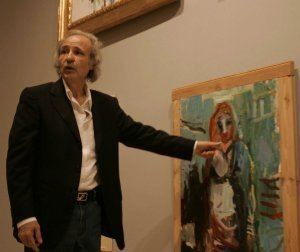
Urban sketchers en museum jorge rando
Biography

Jorge Rando was born in Málaga, Spain, In the 1960s, he moved to Germany in order to pursuit his philosophical studies, and there he met his wife Margit. He settled in Cologne by mere chance, where he became a key actor on the economic and cultural rebirth of this city after the Second World War. German culture and philosophy has been crucial for Rando's personal and artistic development. Since then, he has produced his art work in Spain and Germany, expanding the expressionist art movement in both cultures. Thus his artwork represents a cultural bridge that links the deep philosophical concepts of the German school of though, with the powerful tradition of the Spanish artistic sensibility.The synergy between his philosophical concepts and his energetic painting converge in a lengauage of great expressive force, that uses vigorous and colorful brushes. Nowadays, Jorge Rando lives and works in both cities: Málaga and Hamburg.

According to his recently published Neo Expressionist Manifesto for the XXI century, entitled "Rando's Contemporary Art Testament," Rando is committed to bring back the sense of spirituality in art, and promote expressionism, as an art movement capable of expressing the deepest inner human emotions that connect human kind. In a dehumanized world, Rando's paintings and sculptures are profoundly spiritual and humanistic, and offer to the espectador a massage of hope for humanity, where love is the force that moves the world.
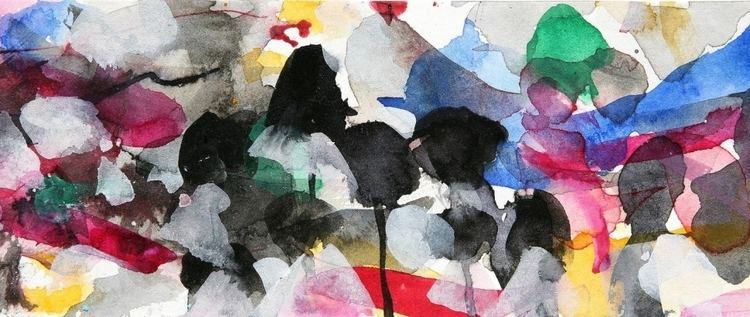
Rando uses art, and the expressionist style in particular; as a cultural bridge for human understanding and empathy in a dehumanized and indifferent world. Neo-expressionism becomes a powerful tool that looks at the inner emotions of the artist and the spectator and translates them in powerful messages, that move the hearts and souls of people, regardless of their religion, sex, race, creed or believe. His goal is to build bridges of understanding and compassion. For Rando love is the underlining force that moves the universe.
Style
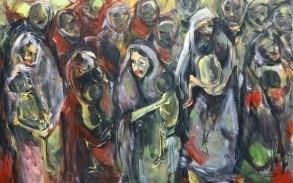
Neo-expressionism is an art movement that uses strong chromatics, simplicity in figures, and the absence of features to express feelings, and their followers pursue the expressions of emotions through art, with disregard to beauty or aesthetic. Although expressionists artist portray recognizable objects in an abstract manner, they do it in a rough and violently emotional way, often using vivid colors. Expressionist artist main objective in not to paint what they see, but what they feel. To many art critics and art historians, Rando is a world reference of neo-expressionism, Jorge Rando's paintings are characterized by the exasperated distortion of the shape, the sensitivity in the use of color, and the powerful presence of the artist gestures and stroke. For Example to Art historian, Enrique Castaños, Art History professor at the University of Malaga, Spain: Rando is known for his powerful brushstroke and his expressive use of colors, which transmit powerful emotions to the spectator, representing a clear example of the neo-expressionist movement.
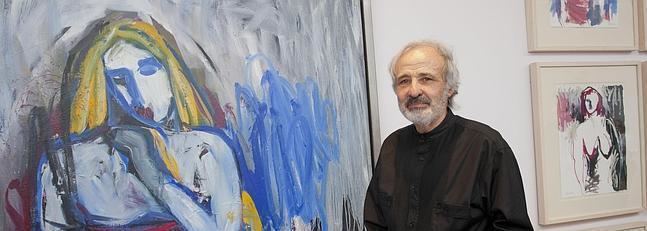
The cycles: painting motives
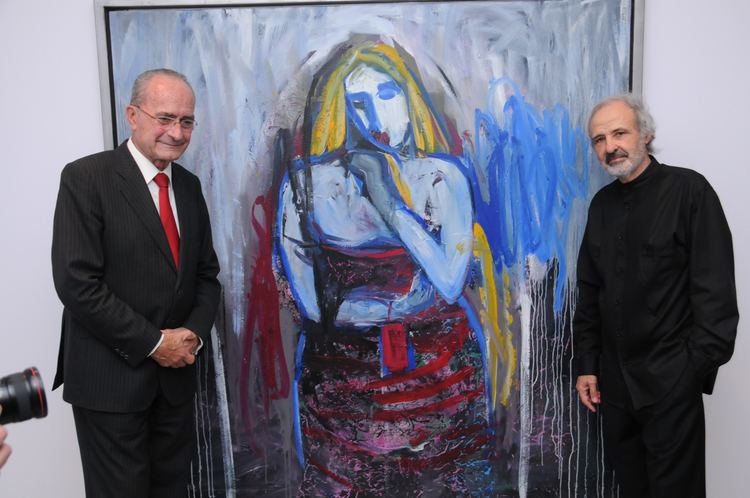
Rando's work is organized by common motives called "cycles," along the years, the artist has portrayed these common themes in his paintings and sculptures, returning to them as the years go by. As expressionist artist did at the beginning of the XX century, prostitutes and beggars are common motives in Rando's paintings, so are Mother Nature and animals. The cycles are very wide, however a common theme in Rando's vast artistic catalogue is suffering and love as the means for redemption.
The Cycles include paintings and sculptures on: Afrika, (figurative and abstract images on Africa's war and hunger exile); Passion ( a collection of religious paintings on the crucifixion of Christ); Maternaties (paintings and sculptures of mothers with their siblings); Prostitution (images of distorted female figures); Pintarradas-Sketchings (floral motives and animals); Käthe Kollwitz (a tribute to one of the great painters of Expressionism, which artwork and life is a testament to love and sacrifice), Children (figures of children walking or playing, where the artist seeks to capture unequivocal body movements of children); Cycling (abstract images of cyclers standing up or in motion); Landscapes and Vertical Horizons (a collection of paintings that combine a powerful use of colours, shapes and brush strokes that make the spectator to connect emotionally with nature and a spirituality); Portraits and Figures ( Portraits and other motives); Card Players (figurative images of people playing cards).
The common motives portrayed in Rando's paintings, evoked a strong humanistic vision, a profound sensibility for the suffering of others, spirituality as well as deep love for everything alive in the universe. These works of art seek to raise the spectators human and social consciousness, and sometimes call on them to take action. Several art critics and historians have written about Rando's cycles. For example, Jiménez wrote: Rando's art works shake our consciousness with these socially concerned paintings; inducing the spectator the spectators to look to their inner self and to reflect in their own emotions.
On the cycles Carmen Pallarés wrote: " Afrika is an exhibition that shows the strength and the purity of Jorge Rando's New Expressionism, and whose creation, it is inseparable to the artist philosophical and humanist principles." Adding(...) "from the unconcealed humanism of his stroke in Afrika, where the drawing manifest itself and the painter finds "the means for free expression, spontaneity and liberation from all ties; (...) to the extremely sensitive gaze to Prostitution, shaped by his energetic brushstrokes and its structured compositions. In landscapes in Space and Vertical Horizons, the "observer of the painting," witness the "colors born from earth like roots.";... Through his philosophical conceptualism of his painting and his incessant investigation of the language of colour, the artist transport us from his own human facet to pure nature.
On the 23rd Volume of Malaga Art History Encyclopedia, art historian Enrique Castaños stated that Rando's (art work) is clearly distinguible from his fellow contemporary artist by the use of thematically oriented series known as "cycles." Castaños wrote "throughout his pictorial series ( Prostitution, Afrika, The Passion, Kathe Kolwitz, Maternities, etc.) it is clear Rando's fundamental concern ia to unravel the inside of the human soul through color, the organic form, its distortion and the free traces of his brush stroke."
Ricardo Barnatán in Pintarradas wrote: "Rando's figurative landscapes, those quick and furious sketches, speaks of what takes place inside us not what we see outside. The brush strokes and the colors just represent the inside of the painter; and if the figures seem recognizable, and they are it is because they work as words in a secret decoded message. A message written from the passion, in the sense of that glorious movement from the soul and the purified suffering as well."
Prizes and Honours
Rando has received several prizes and awards along his fruitful carrier.
In 2017, Rando was invitated to participate in one of the most important events in Germany: "Reformations jubiläums," a 500 years celebration of the Reform movement. The event is taking place in the German City of Emdem, declared European Capital of the Reform ( Reformationsstad Europas). The Exhibition was inaugurated on the 16th of July, under the title: "Ernst Barlach-Jorege Rando, Mistics of Modernity: Expressionism Yesterday and Today." After the celebration the tandem exhibition will travel to Berlin.
In 2016, he received the Ernst Barlach award, in recognition to his life´s work and his commitment to expand new expressionism around the world. Such award is given to outstanding examples worldwide and only very few artist have received it, been Rando the first Spanish painter to do so.
The same year the most popular art magazine in Europe, "ART Magazine," recommended Rando's exhibition "Passion Neur Expressionismus," as one of the 15 best exhibitions in Europe not to miss that year.
In 2015, the City of Málaga awarded Jorge Rando with the prize to the Arts "Estrella Feniké". Additionally, it was awarded the prize "Museum of the Years 2015," by the association of writers Friends of Málaga (Amigos de Málaga).
In 2014, the Jorge Rando Museum was opened, where the artist production will be collected and preserved. Moreover, it represents the headquarters of the homonymous foundation, which aims to study the Expressionism in the broadest sense of the phrase. The museum is located on the premses of the Monastery of "Las Madres Mercedarias" on the popular Molinillo neighbourhood, in Malaga downtown area.
In 2011, Rando was awarded the Perséfoner Media Club Award to the Arts, as best Painter of the year. He designs the statute to be presented to the winners of the Spanish Cinema Festival ( 2011)
In 2010 Rando designed the sculpture for the winners of the SIGNIS Film Circuit.
In 2008, the Writers Association of Málaga gave him the "Best Artist " award.
In 2007 Rando was awarded the Plastic arts Award in Madrid. The Álvaro Mutis Foundation gave him the prize for "the best art book of the year." The United Nations Education and Social Cooperation Organisation in Paris (UNESCO) awarded the Book on Jorge Rando´s art Work entitled "More Light," by Carmen Pallares the prize "Golden Book of the Plastic Arts." Libro de Oro de la Plástica. Unesco (Parish). The Spanish National Library (Madrid) purchased some drawings by the artist for its permanent collection.
In 2006. Rando received the prize from the Antiquaria Foundation for his contributions to Spanish Expressionism. That same year he was also awarded the Contemporary Art prize by "Te Eventsrtulia Ilustrada" in Madrid.
Recent exhibitions
Museum
In 2014, Museum Jorge Rando, in Málaga, was opened.
